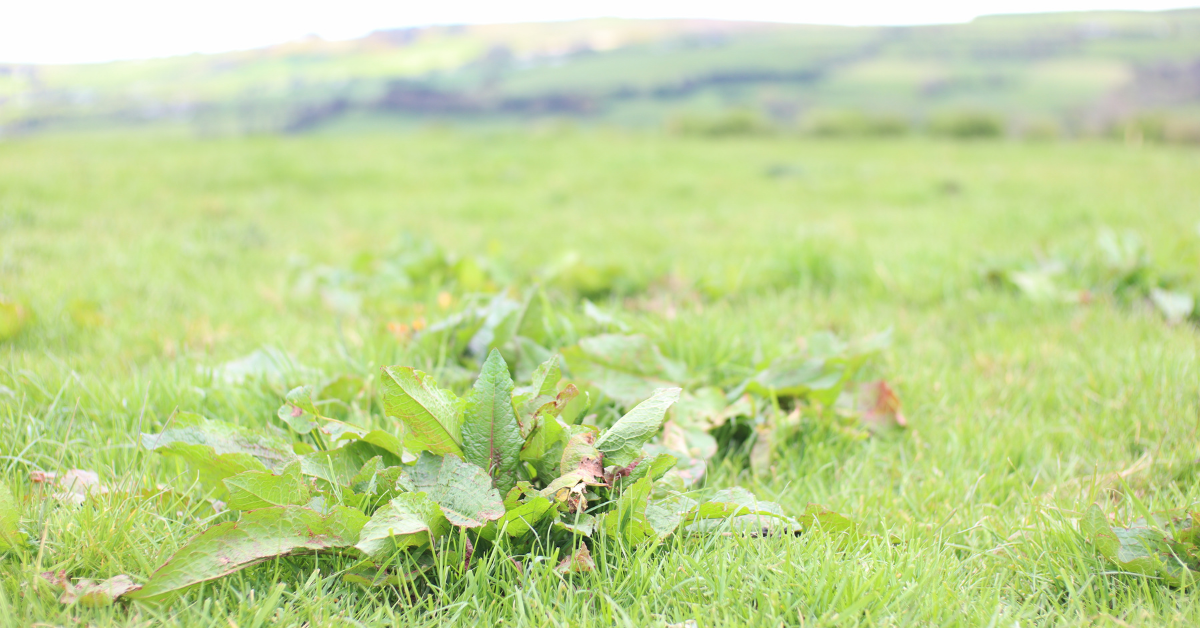If docks were not controlled before first-cut silage, time is not lost, according to Chris Maughan, technical manager with Whelehan Crop Protection.
“There is still plenty of opportunity to control docks during the summer period to ensure a clean, productive sward for the rest of the season and beyond,” advised Chris.
Dock-infested silage swards that were cut in recent weeks are now at the ideal stage for spraying with an effective herbicide. When it comes to choosing the most effective product, there is nothing better than the systemic herbicide Doxstar Pro.
In the video below, Chris outlines how you can get the most from your application of Doxstar Pro.
Manufactured by Corteva Agriscience and distributed on the Irish market by Whelehan Crop Protection, Doxstar Pro contains two powerful chemicals – triclopyr and fluroxypyr – ensuring the most effective kill of the dock root system.
“Every effort should be made to apply Doxstar Pro to the aftergrass approximately three to four weeks after silage is cut, as this is the ideal time for spraying,” said Chris.
“For the most effective control, docks should be sprayed when they are green and leafy, actively growing and 15-25cm high or wide, and before a seed head produces.
“If the sward is closed for a second cut of silage, it is important to leave at least three weeks between spraying and harvesting the crop in order for the chemicals to get fully translocated down to the root system,” he added.
Devastating impact on silage yield
The importance of controlling docks is emphasised by the impact they can have on grass and silage dry-matter yields.
Teagasc research has shown that a 10% infestation of docks can cut silage dry matter by 10%.
A severe infestation can reduce dry matter yield by up to 50%.
Silage quality is also reduced through poorer fermentation and dock stems can do serious damage to the quality of baled silage through puncturing of the film.
Application of Doxstar Pro: Apply Doxstar Pro at a rate of 2L/ha as a single application or two applications of 1L/ha six to 12 months apart. Use a minimum of 300Lwater/ha (30 gallons/ac) and keep animals off the pasture for seven days after spraying. When using low-drift nozzles, for example guardian air nozzles, water volume can be reduced to 200L/ha.
Thistle control
Where thistles are the sole or major weed in a sward, Thistlex is the herbicide of choice.
“Another Corteva Agriscience product, Thistlex is the perfect product for long-term control of both creeping and spear thistles,” said Chris.

It contains the active ingredients triclopyr and clopyralid, which are absorbed right down to the roots of the thistles.
Research has shown that animals leave 30cm ungrazed around each thistle plant. Just one thistle/20m2 is equivalent to a 1% loss in grass dry matter.
Therefore, 50 thistles/20m2, which is very common in thistle-infested swards, can mean a drop of 50% in dry matter yield. Thistles are also an animal health risk, spreading diseases such as orf, pink eye and mastitis.
Chris stressed that timing of the Thistlex spray is vital for a successful kill.
“For best results, thistles should be actively growing, have four to 10 leaves, be 15-25cm high and before a seed head appears,” he said.
“If they have gone beyond this stage, it is best to top them and spray with Thistlex when they have regrown to the correct stage.”
When using Thistlex, you are assured that the chemical is translocated right down to the roots. In contrast, hormone-based products have very little impact on the root system. While killing the foilage of the thistle, they merely act as a chemical topper.
Apply Thistlex at 1L/ha and keep animals off pastures for seven days after straying.
For more information, click here.

